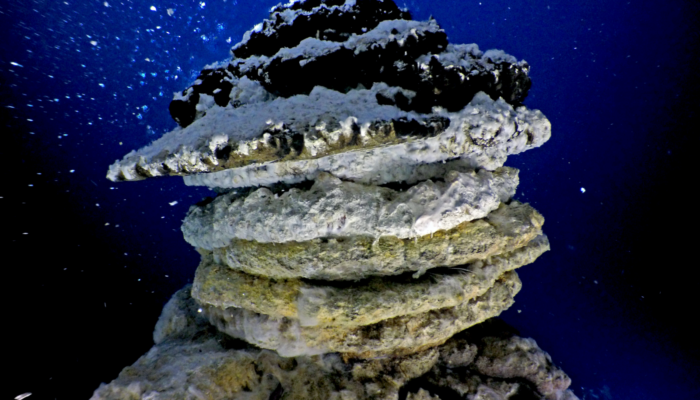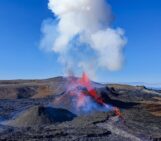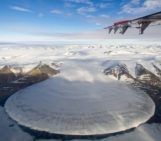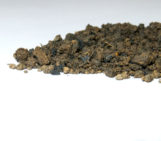
650 metres below the chilly waves of the North Atlantic Arctic Ocean, equidistant between Norway, Iceland and Greenland, are the Jan Mayen Vent Fields. Home to a series of hydrothermal vents strung along a set of normal faults and fissures that run parallel to the seafloor ridge, this is a strange and fascinating place. Hydrothermal vents are places where tectonic activity provides a way for the high-temperature, mineral-rich fluids trapped within the Earth’s crust to escape into the cold, dark waters of the world’s oceans. Found along tectonic plate margins, seamounts and mid-ocean ridges, these geological phenomena act as a focus for life forms that are unlike anything else found on the planet. Because deep-sea hydrothermal vents are so far down in the ocean, photosynthesis is often impossible, meaning that the life forms found in these extreme and inhospitable environments are incredibly specialised to produce energy from the minerals that originate in the vents themselves – which has led to these ‘extremophiles‘ being used as analogues for possible life that could be found elsewhere in our solar system.
The feature shown in this photograph is described by the photographer as a ‘layer cake’ vent, from the Jan Mayen Vent Fields. One thing that is often surprising about hydrothermal vents is that their shapes vary all over the globe, from tall chimneys called black smokers, to places where the hydrothermal fluids just flow directly out of fissures in the seafloor, to diffuse venting structures like the ones that formed the layered mats in this photograph. Discovered in 2005, the high concentration of carbon dioxide (CO2) in the hydrothermal fluids, which can reach temperatures of 270 degrees centigrade, has made the Jan Mayen Vent Fields a place of particular interest to researchers studying the effects of natural CO2 leakage and ocean acidification – as well as the extreme life forms found in these unique, geological environments.
Description by Hazel Gibson, EGU Communications Officer.
Imaggeo is the EGU’s online open access geosciences image repository. All geoscientists (and others) can submit their photographs and videos to this repository and, since it is open access, these images can be used for free by scientists for their presentations or publications, by educators and the general public, and some images can even be used freely for commercial purposes. Photographers also retain full rights of use, as Imaggeo images are licensed and distributed by the EGU under a Creative Commons licence. Submit your photos at http://imaggeo.egu.eu/upload/.




